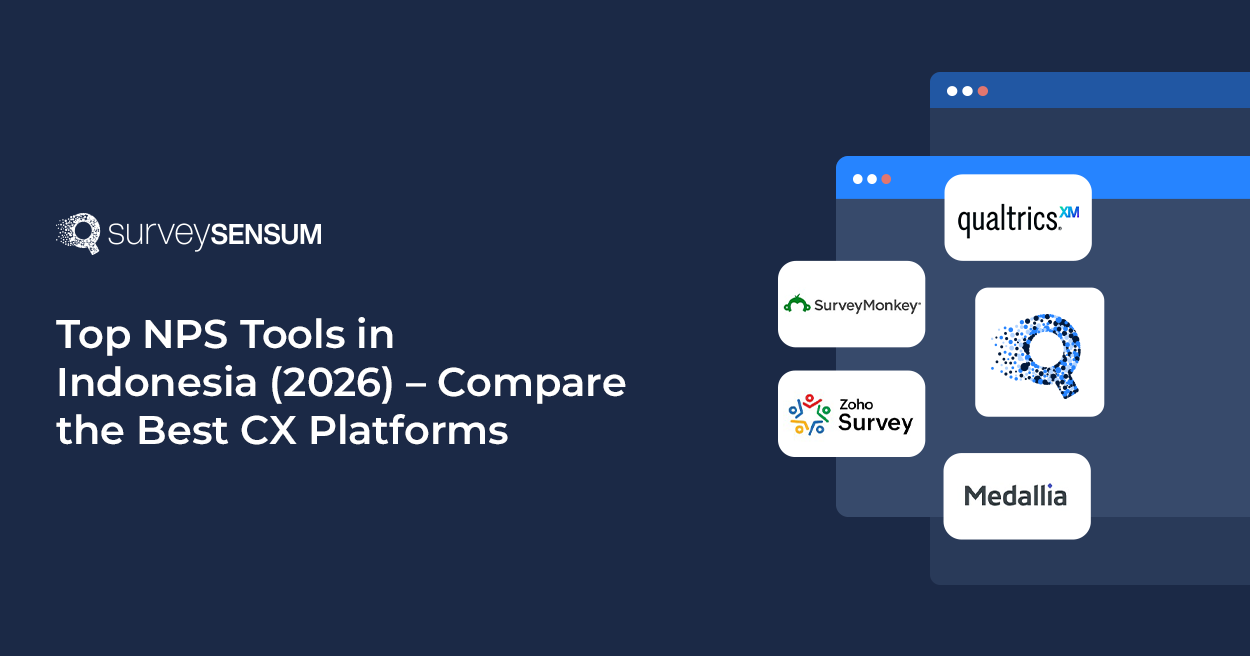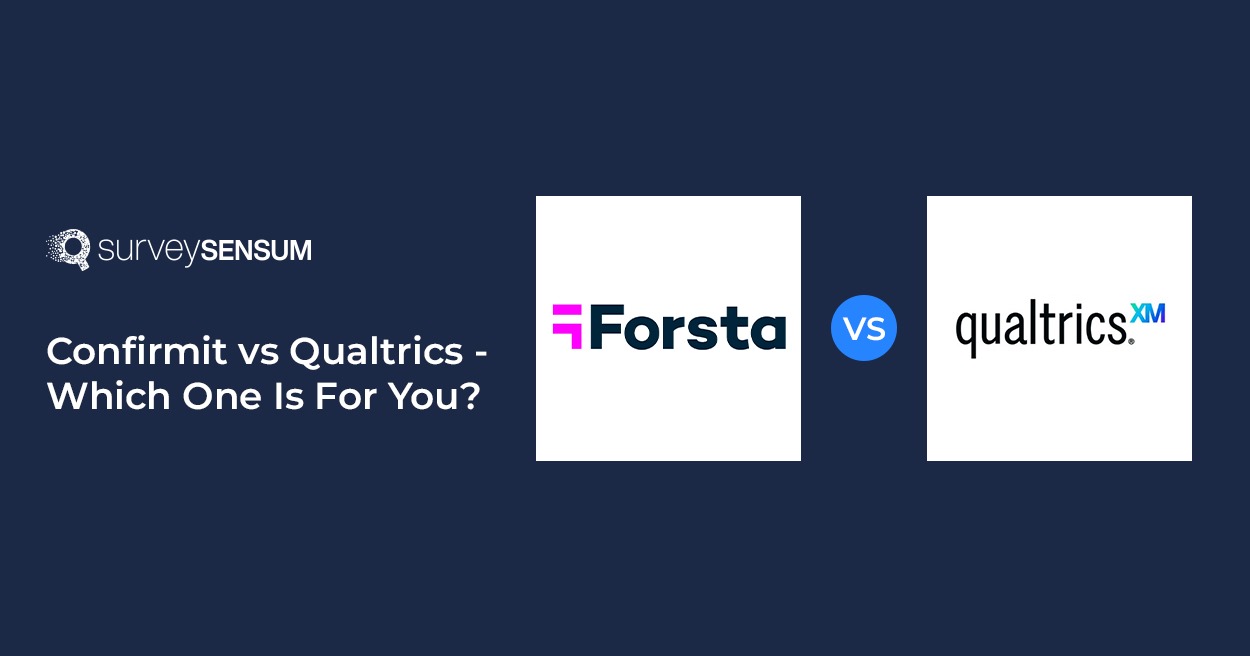

Have you ever noticed that your survey results seem off, or that your data-driven decisions aren’t working as well as you’d hoped?
If so, you’re not alone. In fact, 84% of CEOs are worried about the quality of the data they rely on. It’s imperative to address a critical issue: survey response bias.
This subtle yet pervasive problem can distort your findings, mislead your strategy, and even jeopardize your business success.
So, let’s understand what exactly survey response bias is, its causes, its influence on survey results, and most importantly, how to tackle it. Let’s dive in.
What is Survey Response Bias?

Survey response bias occurs when survey participants share biased, inaccurate, or false responses, either accidentally or deliberately. This could be a result of trying to be socially desirable or the misleading nature of questions.
Here’s an example that can cause survey response bias.
→ Do you drink regularly? [Yes/ No]
Now, here’s how this question might play out. Some respondents might want to appear socially acceptable and answer “No,” even if they drink regularly. Social drinkers might find themselves in a fix, as there are no accurate options for them. Thus, leading to response bias.
How Does Survey Response Bias Affect the Results?
Response bias can cause some significant issues in your results which can affect your bottom line.
- Data Inconsistencies: Response bias brings in inaccurate and false data that doesn’t necessarily reflect participant opinions. Such inaccuracies can distort the results and ultimately affect your business decisions.
- Declining ROIs: Inaccurate insights result in poor decision-making, which in turn leads to poor product performance. Why? Because the skewed results might push you to carry out the wrong campaign and target the wrong customers.
- Dissatisfaction among Stakeholders: Management and senior leaders base their future decisions on market research and customer survey insights. However, survey bias can push them to allocate the company’s money and resources in the wrong places, affecting performance levels. This could disappoint investors and stakeholders, potentially leading to budget cuts for the company.
- Waste of Time and Resources: According to IBM, poor data quality, including survey biases, costs the U.S. economy approximately $3.1 trillion annually. Survey bias results in questionable data quality and flawed business decisions, often necessitating the need to repeat surveys to obtain reliable data, leading to the loss of time and resources.
What are the Different Types of Survey Response Bias?
In order to minimize survey response bias, we should first study the different types. Here are 7 different types of response bias with examples.

1. Social Desirability Bias
“Do you eat an entire pizza in one sitting?”
What do you think would be the answer to such a survey question?
Most respondents would probably answer “NO” to this question even if they actually do eat an entire pizza in one sitting. Why? Because that’s the answer which is more socially acceptable; leading to social desirability bias and inaccurate data.
Social desirability bias occurs when respondents are asked leading or sensitive questions. Respondents often hesitate to answer honestly for such questions and tend to overreport “positive traits” and underreport “negative traits”, based on what they believe is a socially desirable answer.
2. Non-response bias
Non-response bias occurs when the survey sample or feedback you collected doesn’t represent your entire target population.
For example, you conducted an email survey campaign aiming to get feedback from customers who attended the opening of a new showroom of your brand. Let’s say half of the emails ended up in spam folders. Now, you will only receive the responses of the other half. Then, the survey results will reflect the opinions of only a portion of the attendees, not the whole group, which again leads to inaccurate data collection.
3. Hostility Bias
Hostility bias occurs when respondents express negative emotions or criticism towards a topic, regardless of their true feelings or the actual context. This bias can skew survey results and lead to an overly negative portrayal of the survey subject.
For instance, your company sends out a survey to your customers to gather feedback on a new product. If some of your customers have had a bad experience with your company in the past, there is a chance of them giving a poor rating to your product which might have actually delivered a good performance. This results in feedback that doesn’t accurately reflect the product’s quality.
4. Extreme Response Bias
Have you ever filled out a survey where you simply gave the highest or lowest rating even if your actual experience was somewhere in the middle? This can be a result of extreme response bias.
Extreme response bias happens when your respondents share extreme ratings i.e. either the highest or lowest ratings for your survey questions, even if they don’t have any strong opinion. This is often seen in satisfaction surveys where people rate extremely high or low, instead of a neutral response.
For example, your question goes like this. “How do you like the experience of our 5-star rated product?”
This is a leading question and can result in extreme bias. Respondents might give the highest score because the question is leading, or the lowest score if it rubs them the wrong way, resulting in unreliable results.
5. Recency Bias
Recency bias occurs when your respondents simply pick the answer they read first. Such respondents usually want to complete the survey as fast as possible and get done with the task. They typically rush through the questions and mark the first answer they come across, instead of providing honest feedback.
6. Acquiescence Bias
Acquiescence bias can be regarded as an extreme form of social desirability. However, instead of sharing the “socially desirable” answers, respondents simply agree with research statements, regardless of what they actually think.
Let’s consider this question for example “Do you agree that this new feature-rich product caters to all your requirements?” A respondent influenced by acquiescence bias will answer “YES”, because they think that’s what the survey maker wants to hear.
Now, acquiescence bias can also depend on the way the question is framed or asked by the interviewer. It often happens when participants are asked to respond with “Yes” or “No,” or to agree or disagree with statements (similar to the question above).
No matter what the reason is, this bias cannot deliver a favorable outcome for you.
7. Voluntary Response Bias
This bias happens when your respondents choose to participate on their own in your surveys, rather than being selected randomly. Such respondents always have strong opinions or experiences about the survey subject, which can lead to skewed results.
Let’s take the example of call-in radio shows that invite listeners to participate in surveys or discuss controversial topics. These participants need not necessarily represent the broader population’s views, making the survey results less reliable for drawing conclusions.
Now that we have studied in detail about response bias, it’s time to discuss some effective ways to minimize this bias.
How to Minimize Survey Response Bias?

1. Understand Your Demographic
Analyzing and understanding your audience demographic should be the primary step taken by your brand while designing your survey. Imagine asking this question, “How stylish do you find our new athletic wear?”
Now, a younger demographic will be able to answer this easily. But what if half of your audience belongs to an older demographic? They may not be able to resonate with this question, as they mostly prioritize comfort over style. This can lead to biased answers.
Therefore, it’s essential to consider who you are surveying, which group they belong to, what information you want to gather, and the potential obstacles that can hinder reliable data collection.
2. Don’t Ask Leading Questions
Leading questions are one of the biggest contributors to response bias. For instance,
“What are your thoughts on our efficient product?” is a leading question. This question already implies that the product is good, thereby steering the responses towards positive feedback, instead of eliciting a genuine opinion.
This is why you must avoid creating leading questions. They can greatly influence responses and tamper with the accuracy of the results. Instead, your questions should be neutral and unbiased, so that responses are reliable.
3. Try to Avoid Emotionally Charged Questions
Let’s say you came across a survey question, “Did our product smash your expectations?”. Would you be encouraged to fill out such a survey? Probably not, because such questions are not only leading but also use emotionally charged words, which brings down the survey’s overall appeal.
Surveys ought to be designed in a neutral language. It’s best not to use extreme emotional words like “smashed”, “despicable” etc. Also, it’s best to steer away from sensitive topics if possible.
4. Use Diverse Question and Response Formats
People don’t enjoy filling out the same survey over and over. It’s best to change your question and response formats each time to boost the engagement of your respondents. You can use multiple choice questions sometimes and other times go for ratings etc. This
way you can capture audience interest and avoid biases that occur due to repeated question and format types.
5. Use the Right Survey Tool
Using the right online survey tool can help you reduce bias via features that ensure data accuracy.
For example, a good survey tool can provide diverse question types, response formats, and even branching logic to make the survey as focused as possible. Additionally, the analysis features help identify and address bias. Opting for the right survey builder saves you time, money, and repeated surveys.
Avoid Repeating Surveys By Achieving Data Accuracy with SurveySensum’s Advanced Features.
SurveySensum – The Right Survey Tool to Avoid Bias

A comprehensive survey platform like SurveySensum can help you foresee biases from afar and address them effectively. The platform boasts excellent features like
- 100+ ready-to-use templates,
- a plethora of question formats,
- survey branching,
- anonymous surveys
- multilingual surveys
- AI-driven text analytical features.
Added to all this is the personalized guidance of their CX experts, who will assist you throughout the entire process via dedicated workshops. They will work closely with you to develop surveys that are both relevant and effective, eliminating any potential response bias. But that’s not all. As the customer feedback starts to flow in, these CX experts will collaborate with you to identify actionable insights and make the right business decisions.
Frequently Added Questions on Survey Response Bias
- Eliminating leading questions
- Creating a survey without major research
- Understanding participant demographics
- Adding a survey timer
Eliminating leading questions and understanding participant demographics are the best ways to minimize response bias. While demographic analysis can help you create the right questions, eliminating leading questions will help you gather genuine feedback.
Giving limited response time to survey participants can lead to procedural bias. Insufficient time can force them to share rushed answers that might not reflect their actual opinions.
Here are 5 ways to minimize response bias in a survey
- Analyze and understand your demographic to ask the right questions.
- Avoid asking leading questions as it can influence responses
- Eliminate the use of emotionally charged words to retain the overall survey appeal
- Use diverse question and response formats to boost engagement
- Use efficient survey tools with advanced features to ensure data accuracy

















